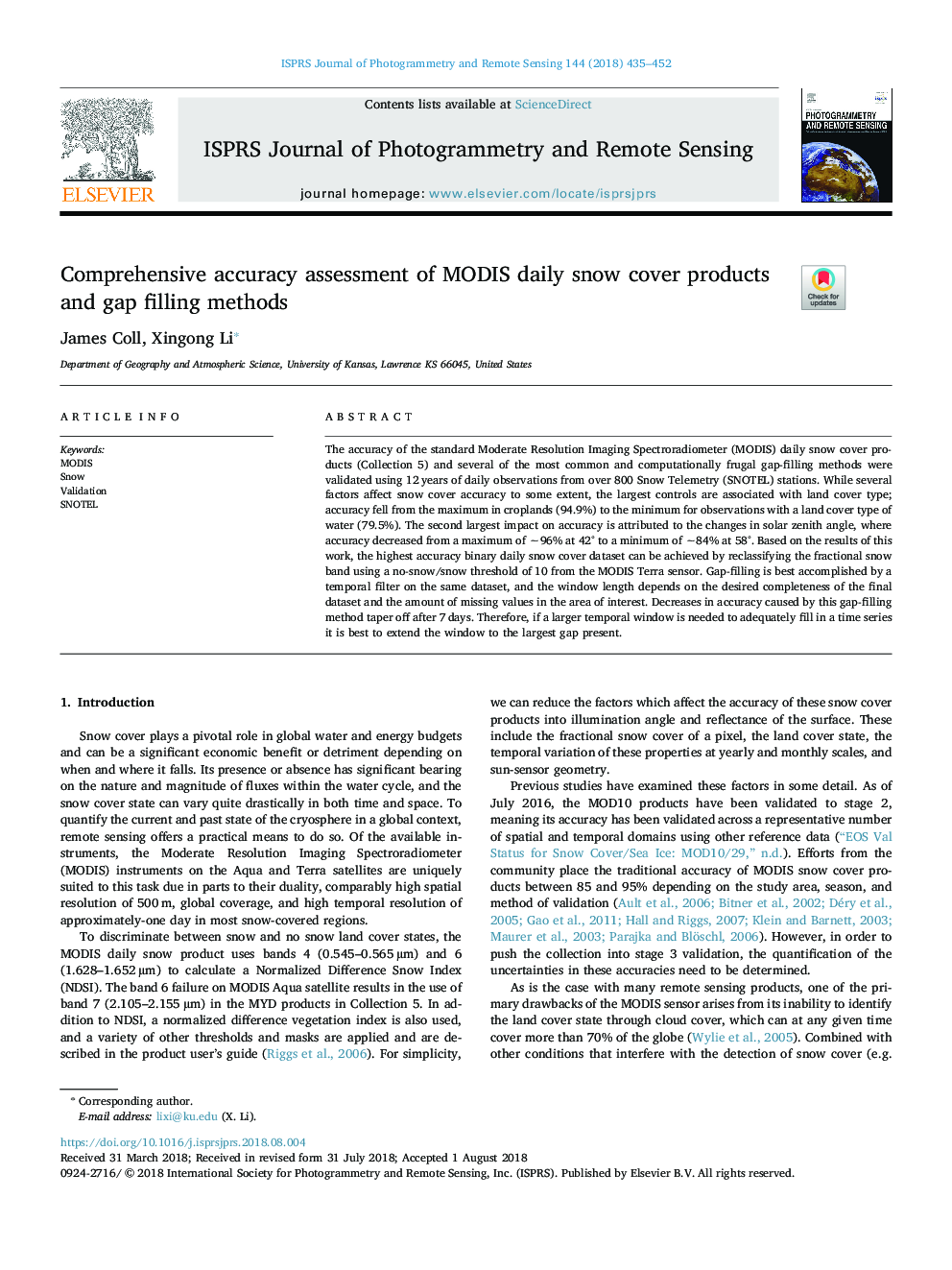| Article ID | Journal | Published Year | Pages | File Type |
|---|---|---|---|---|
| 11002925 | ISPRS Journal of Photogrammetry and Remote Sensing | 2018 | 18 Pages |
Abstract
The accuracy of the standard Moderate Resolution Imaging Spectroradiometer (MODIS) daily snow cover products (Collection 5) and several of the most common and computationally frugal gap-filling methods were validated using 12â¯years of daily observations from over 800 Snow Telemetry (SNOTEL) stations. While several factors affect snow cover accuracy to some extent, the largest controls are associated with land cover type; accuracy fell from the maximum in croplands (94.9%) to the minimum for observations with a land cover type of water (79.5%). The second largest impact on accuracy is attributed to the changes in solar zenith angle, where accuracy decreased from a maximum of â¼96% at 42° to a minimum of â¼84% at 58°. Based on the results of this work, the highest accuracy binary daily snow cover dataset can be achieved by reclassifying the fractional snow band using a no-snow/snow threshold of 10 from the MODIS Terra sensor. Gap-filling is best accomplished by a temporal filter on the same dataset, and the window length depends on the desired completeness of the final dataset and the amount of missing values in the area of interest. Decreases in accuracy caused by this gap-filling method taper off after 7â¯days. Therefore, if a larger temporal window is needed to adequately fill in a time series it is best to extend the window to the largest gap present.
Keywords
Related Topics
Physical Sciences and Engineering
Computer Science
Information Systems
Authors
James Coll, Xingong Li,
